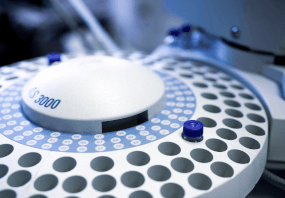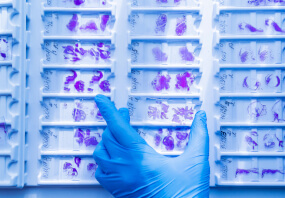General description
Neurogranin (Ng) (also named RC3, p17 or BICKS) is a small protein originally identified in rat brain and abundantly expressed in several telencephalic areas, such as the cerebral cortex, hippocampus, amygdala, and striatum. In neurons, it is found concentrated at dendritic spines where it participates in synaptic signaling events through the regulation of calmodulin (CaM). Neurogranin protein is a critical third messenger and substrate of PKC in the molecular cascade necessary for synaptic development and remodeling. Neurogranin (Ng) features an IQ motif that mediates its interaction with CaM and phosphatidic acid (PA). The interaction is controlled by phosphorylation at serine 36 of Neurogranin. Neurogranin is phosphorylated at serine 36 by PKC. Ser36-phosphorylated Neurogranin is unable to bind either CaM or PA. Neurogranin in localized in the cell bodies of neurons in the cortex and in the apical and basal dendrites of pyramidal neurons. Neurogranin is not found in dendrites and its expression is very low as well in Alzheimer’s disease patients.
Specificity
Phosphorylated Neurogranin and Neuromodulin
Immunogen
Epitope: IQ domain
KLH-conjugated linear peptide corresponding to the IQ domain of Rat phospho-Neurogranin.
Application
Research Category
Neuroscience
Research Sub Category
Neuroregenerative Medicine
This Anti-phospho-Neurogranin (Ser36)/Neuromodulin (Ser41) Antibody is validated for use in Western Blotting for the detection of phospho-Neurogranin (Ser36)/Neuromodulin (Ser41).
Quality
Evaluated by Western Blotting in Mouse brain tissue lysate.
Western Blotting Analysis: A 1:1000 dilution of this antibody detected phospho-Neurogranin (Ser36) / Neuromodulin (Ser41) in 10 µg of Mouse brain tissue lysate treate with magnisium (lane1) or PKC (lane2)
Target description
~43 kDa is phospho-Neuromodulin (GAP-43) and ~17 KD is phospho-Neurogranin. Uncharacterized band(s) may appear in some lysates.
Physical form
Rabbit Polyclonal serum with 0.05% sodium azide.
Unpurified
Storage and Stability
Stable for 1 year at -20°C from date of receipt.
Handling Recommendations: Upon receipt and prior to removing the cap, centrifuge the vial and gently mix the solution. Aliquot into microcentrifuge tubes and store at -20°C. Avoid repeated freeze/thaw cycles, which may damage IgG and affect product performance.
Other Notes
Concentration: Please refer to lot specific datasheet.
Disclaimer
Unless otherwise stated in our catalog or other company documentation accompanying the product(s), our products are intended for research use only and are not to be used for any other purpose, which includes but is not limited to, unauthorized commercial uses, in vitro diagnostic uses, ex vivo or in vivo therapeutic uses or any type of consumption or application to humans or animals.
biological source: rabbit. Quality Level: 100. antibody form: serum. antibody product type: primary antibodies. clone: polyclonal. species reactivity: mouse. species reactivity (predicted by homology): rat (based on 100% sequence homology). technique(s): western blot: suitable. NCBI accession no.: NP_077054. UniProt accession no.: Q04940. shipped in: wet ice. target post-translational modification: phosphorylation (pSer36). Gene Information: mouse ... Nrgn(64011)rat ... Nrgn(64356). Storage Class Code: 12 - Non Combustible Liquids. WGK: WGK 1. Flash Point(F): Not applicable. Flash Point(C): Not applicable.
Shipping Information:
Dry Ice Surcharge & Ice Pack Shipments: $40
More Information: https://cenmed.com/shipping-returns
- UPC:
- 51152103
- Condition:
- New
- Availability:
- 3-5 Days
- Weight:
- 1.00 Ounces
- HazmatClass:
- No
- MPN:
- ABN426
- Temperature Control Device:
- Yes












